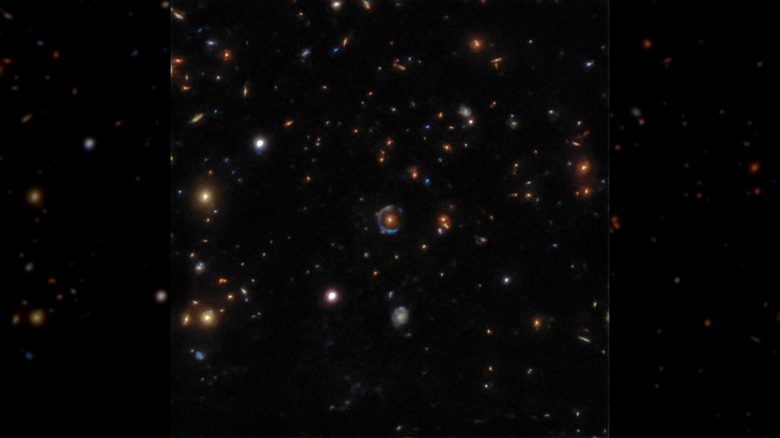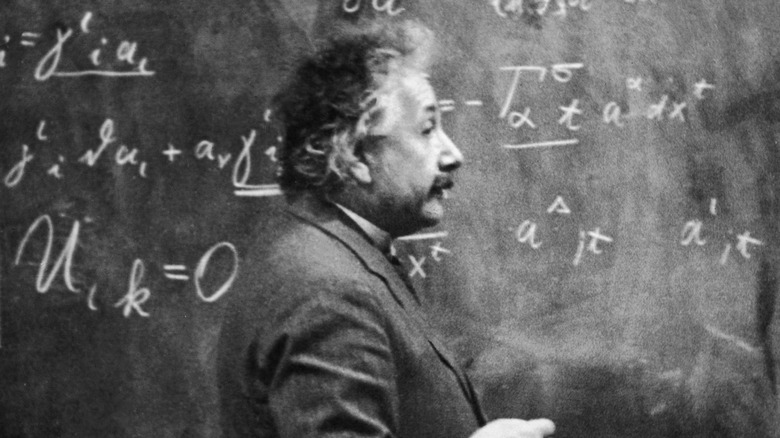Albert Einstein Predicted This Unique Phenomenon And Now We Can See It With Our Own Eyes
Another day, another fascinating achievement from the James Webb Space Telescope. In 2025, the space-based telescope captured eight new images of our universe. Each photograph reveals rings and arcs of multicolored light, which, upon closer inspection, are actually warped images of different galaxies and stars. The phenomenon is called gravitational lensing, and the gravity in question was provided by other nearby galaxies. Remarkably, Albert Einstein predicted gravitational lensing over a hundred years ago, but he didn't have the technology to observe it on such a grand scale. Now, thanks to the James Webb Telescope, the proof is right before our very eyes.
Gravitational lensing can be caused by any massive object, including stars, galaxies, and black holes. Of course, we can't see black holes, since they're composed of materials so densely packed together that light can't escape their event horizon. We can, however, observe the light that passes close enough to get warped by their immense gravity. When a massive object is, from our perspective, positioned in front of another, its gravity curves the path of the light of the background object. In other words, the background object's light wraps around the foreground object, appearing to us as a distorted image in a halo-like ring.
As a result, gravitational lensing allows us to see objects that would have otherwise been blocked from view. And, just like a camera lens, they amplify extremely distant objects, providing scientists with a focused (albeit warped) image of our universe's ancient past. As the James Webb Space Telescope continues to unveil the cosmos in greater detail than we've ever been afforded, Einstein's contributions to our understanding of the universe appear all the more brilliant.
The long road to proving Einstein was right about gravity
In 1687, Isaac Newton published the first comprehensive theory of gravity, which posited that particles with mass are mutually attracted to each other. Yet, while Newtonian gravity successfully explained how gravity worked, it didn't explain why. Over 300 years later, Albert Einstein provided a bold answer.
Einstein's theory of general relativity posits that gravity is not the result of particles interacting directly with one another, as they do in the other fundamental forces like electromagnetism. Instead, mass curves the fabric of spacetime around it, like a bowling ball on a trampoline, which redirects the paths of other nearby objects towards it. Unlike Newton's concept of gravity as a force only possible between objects with mass, Einstein's general relativity predicted that the paths of massless objects, such as photons of light, are also affected by gravity when they move along its curved spacetime.
On May 29, 1919, British scientists set out to confirm or disprove Einstein's bold explanation for gravity. They readied around their telescopes to observe a solar eclipse, since the moon would block the light pollution of the sun and allow them to observe the space around the coronal disk. What they saw was remarkable: As the moon's shadow darkened the sky and the light of the stars twinkled into view, the stars closest to the coronal disk appeared displaced from their normal positions in the night sky. It was the first observation of gravitational lensing and the first time that Einstein's wild idea of general relativity was confirmed to be true. Today, our modern telescopes are far more advanced than those of 1919, but the same conclusion continues to be found: Einstein was right about gravity all along.

